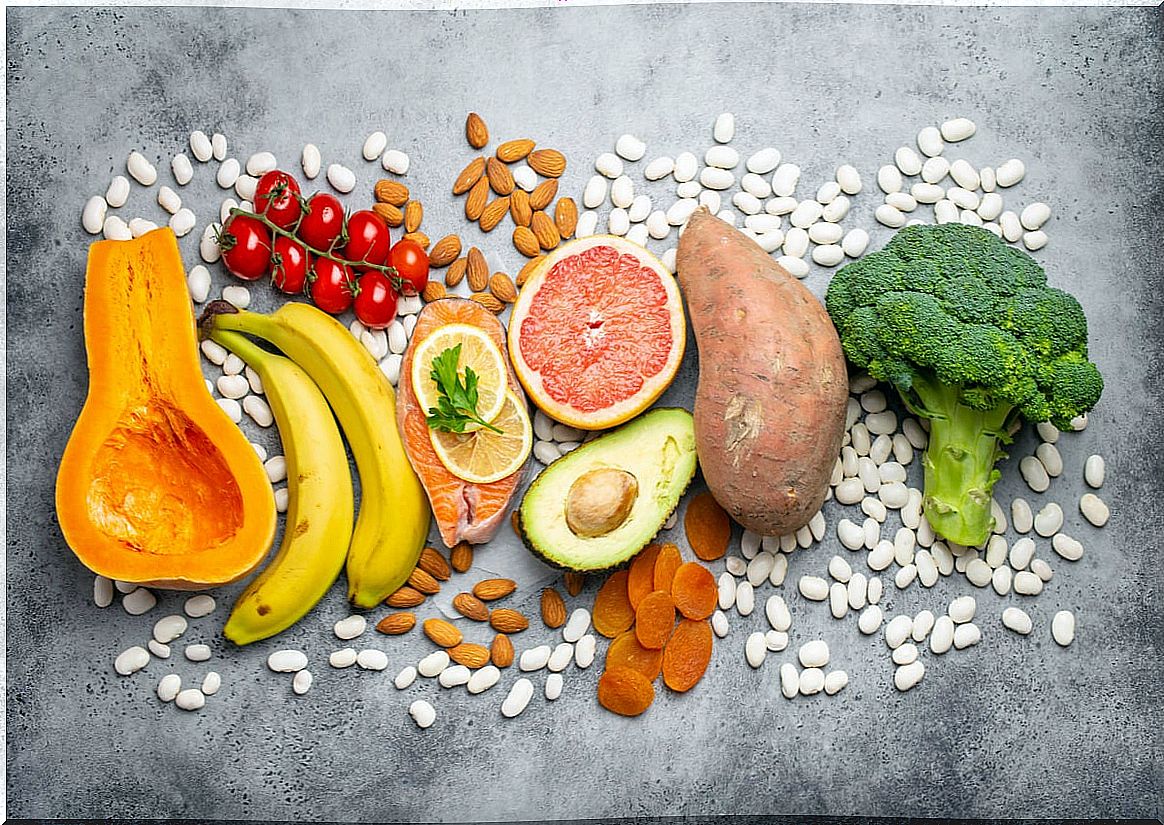Hypokalemia: What Is It And What Are Its Symptoms?
Hypokalemia, also known as hypokalemia , is a disorder in the fluid and electrolyte balance (of minerals present in the blood) that is characterized by a decrease in the levels of potassium ion in the plasma.
According to the Spanish Society of Nephrology, both hyperkalemia and hypokalemia cause alterations in the polarization of cell membranes and one of its most serious effects may be the involvement of the cardiovascular system. That is why, despite being a common pathology in clinical practice, knowing all the information is essential.
The importance of potassium
Within the human body, the potassium ion is responsible for maintaining the normal balance of water and fluids between cells and the environment. According to the OXFORD Advances in Nutrition magazine , this electrolyte is also involved in muscle contraction and its regulation at the nervous level.
For the Spanish Society of Nephrology, the concentration of potassium in the blood depends on its intake, elimination and distribution among cells. The minimum requirements for potassium in the diet are 1600 to 2000 milligrams per day, but the World Health Organization (WHO) advises an intake of 3500 milligrams per day. Vegetables and fruits, for example, are foods rich in this chemical element.
Finally, it is necessary to note that 90% of ingested potassium is excreted by the kidneys, 5% by the gastrointestinal tract and the remaining 5% by the kidneys. Thus, it is not surprising that disorders such as hypokalemia are often associated with kidney problems.

What are the causes of hypokalemia?
A patient is considered hypokalemic when the concentration of this electrolyte in the blood is less than 3.5 mEq / l (milliequivalents per liter of plasma, that is, its ionic concentration). The clinical picture may vary according to the level.
According to the MSDmanuals portal and other sources already cited, hypokalemia has various causes. We present some of them below:
- Low intake: this is rarely the source, as many foods contain sufficient amounts of potassium not to lower plasma levels. In general, it occurs in patients with anorexia and malnutrition.
- Increased entry of potassium into cells: if cells absorb more potassium than they should, its concentration in the blood decreases. Pathologies such as alkalosis, poisoning or inheritable diseases (periodic hypokalemic paralysis) can promote this state.
- Kidney losses: adrenal gland problems, such as hyperaldosteronism, are linked to this pathology. Acute kidney failure, certain drugs, or rare syndromes (Cushing’s syndrome) also promote kidney loss of potassium.
- Digestive tract deficiencies: due to vomiting, diarrhea, fistulas or gastric adenomas.
- Loss through the skin: from exercises with excessive sweating, injuries or burns.
As we can see, there are multiple causes that can explain hypokalemia. Of special mention are the renal losses, since these are due, in many cases, to the administration of diuretic drugs. Before treatments with these medicines, it is necessary to be vigilant.
Symptoms of hypokalemia
According to the Clinical Journal of Family Medicine, hypokalemia can manifest itself in a number of ways. These are some of the most common symptoms:
- Neuromuscular: weakness, general fatigue, paralysis, respiratory arrest if the respiratory muscles are affected and even a progressive atrophy of the body muscles.
- Cardiac: alterations in the normal electrocardiogram. Fatal arrhythmias can occur.
- Renal: hypokalemia can manifest itself with greater difficulty for the patient to concentrate urine. This can be accompanied by an urgent need to drink fluids (polydipsia).
- From the central nervous system: lethargy, irritability, psychosis and favoring the appearance of hepatic encephalopathy due to the presence of toxic compounds in the brain.
- Metabolic: alkalosis and carbohydrate intolerance.
As we have seen, we are facing a clinical picture of considerable severity. In the long term, hypokalemia causes kidney damage, growth retardation, and even heart disorders.
How is the diagnosis made?
The obvious clinical manifestations suggest hypokalemia. An electrocardiogram will be performed on the patient to observe their heart rhythm, as well as a series of personal questions to clarify the underlying reason.
Still, hypokalemia is confirmed by measuring potassium ion levels in plasma. The hardest job is figuring out why it happened. Various tests can be performed on the patient to elucidate the initial reason for the pathology.
What is your treatment?
Treatment will vary depending on the clinical picture of the patient:
- For mild hypokalemia, it is enough to include foods rich in potassium, such as orange, banana or tomato in the diet.
- In moderate cases, the intake of potassium in capsules should be prescribed during meals.
- In severe hypokalemia, this is not enough. Intravenous administration of ClK (potassium chloride) may be required in an emergency hospital setting.
Again, these treatments are focused on increasing potassium levels in the blood. Still, to address the root problem you have to treat the underlying disease that caused the hypokalemia in the first place.

A rare condition
The most valuable recommendation in this case is that it is not necessary to worry about pathologies like this. In a healthy person, potassium levels regulate themselves based on a varied diet, so there is no need to obsess over their intake.
In any case, in patients with diarrhea and vomiting due to infections, hypokalemia is one more complication of the disease. In other cases, it can come from more serious pathologies, such as kidney disease and hormonal imbalances.









